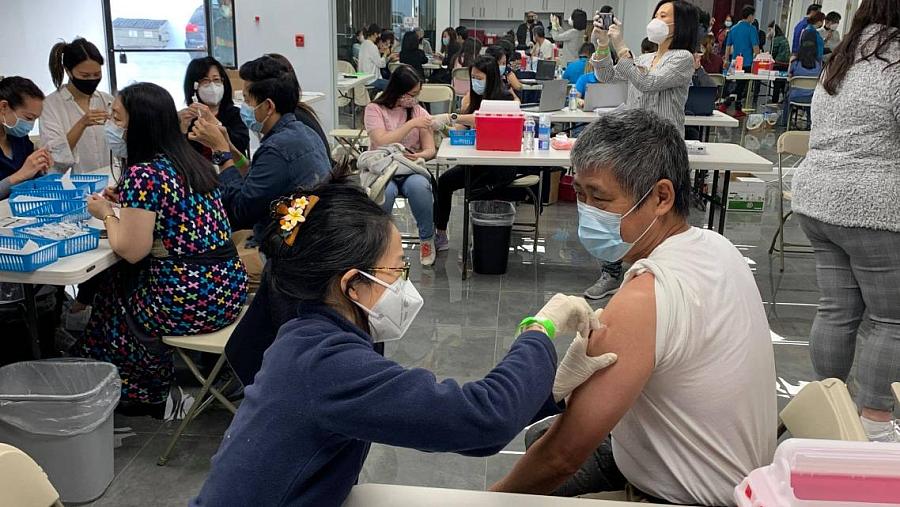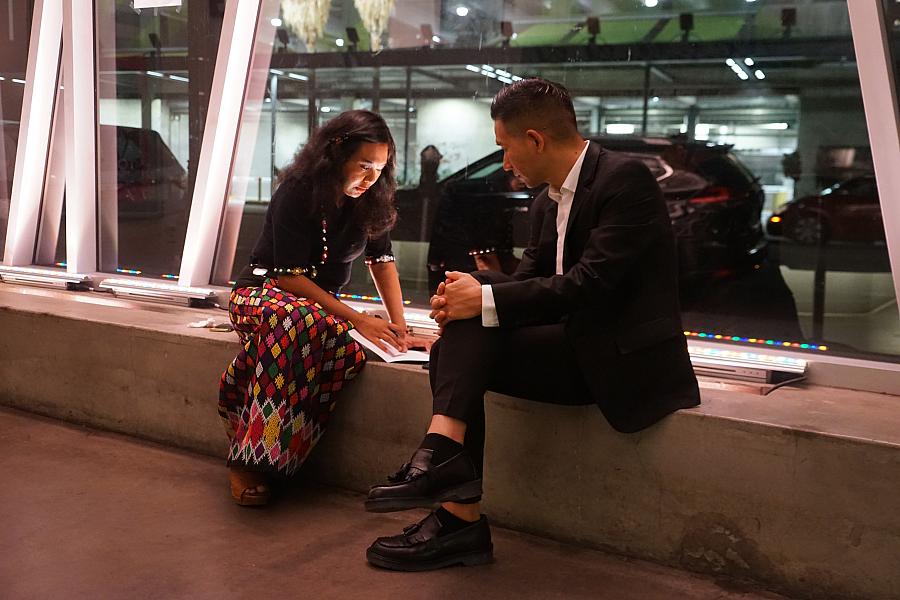Fighting COVID misinformation in her immigrant community in a bid to save lives

A vaccination clinic for the Burmese community in April, 2021 in El Monte, California.
(Photo via SweSwe Aye)
One of the most harrowing storylines of the pandemic was the degree to which immigrant communities bore such unequal losses.
As COVID-19 spread in 2020 and 2021, these communities were particularly vulnerable to misinformation about the virus and the safety of vaccines. Many relied on Facebook and other social media sites for their news, where false and misleading information ran rampant, contributing to higher infection and death rates in these communities.
Few people understood this better than SweSwe Aye, a Los Angeles-based journalist who had trained as a physician in her native Burma. As the editor of the only Burmese language newspaper in the United States, a trusted source of information in the community, Aye wanted to combat the misinformation. But with little experience in health reporting, she wasn’t sure how to go about it.
Aye is one of a growing number of nontraditional storytellers admitted into the Center for Health Journalism’s training programs. While these individuals are trusted within their communities and in unique positions to impart factual information or elevate underrepresented voices, they come to journalism with little or no formal training.
Her participation in the 2021 Center for Health Journalism California Fellowship training program helped changed that. Aye was able to produce a series of deeply reported pieces that dispelled myths about the virus and the vaccines and documented the devastating impacts of the pandemic on the Burmese community. Her coverage ultimately prompted more people in the community to take the virus seriously and get vaccinated.
Aye credits the Center for “elevating ethnic media” by providing her the same opportunities for professional growth and development as journalists at mainstream media outlets.
“The fellowship changed my work. It had a big impact. It gave me a sense of power,” she said. “As ethnic media, it means a lot that we have the same chance to improve our journalism as the mainstream media.”
Like other immigrant communities, Burmese Americans are more likely to work in essential jobs and live in multigenerational homes, putting them at greater risk of exposure to COVID. At the same time, Aye says, many in the community didn’t believe the virus was real at first or that it was any worse than the flu. Even if they did take it seriously, they were more likely to rely on traditional remedies.
The fellowship changed my work. It had a big impact. It gave me a sense of power. As ethnic media, it means a lot that we have the same chance to improve our journalism as the mainstream media. SweSwe Aye, Fellow
“At the beginning of the pandemic people were very confused,” Aye says. “Many people in the Burmese community were hesitant to get vaccinated because they were worried about the side effects.”
So, Aye wrote a first-person account of being vaccinated to show that the anti-vaccine rumors circulating on social media were unfounded. The article ran on the front pages of the Myanmar Gazette and Mandalay Gazette, with a picture of her receiving the shot. She also ran obituaries of community members who died from COVID. The outlet, based in Los Angeles, serves as a major news source for the several hundred thousand Burmese immigrants living in the United States.

SweSwe Aye conducts an interview.
(Photo via SweSwe Aye)
A subsequent piece focused attention on public health efforts to boost vaccination rates in the Burmese community in Los Angeles, and the challenges the campaign faced. She also wrote a cautionary tale about a nurse in the Burmese community who contracted COVID and nearly died following her mistreatment at a rural Missouri hospital, where she suffered anti-Asian discrimination.
“Many in the Burmese community must contend with issues like cultural mistrust, persistent racial health inequities, financial hardship and other traumas,” she said. “But these difficulties are not always clear to those outside the community.”